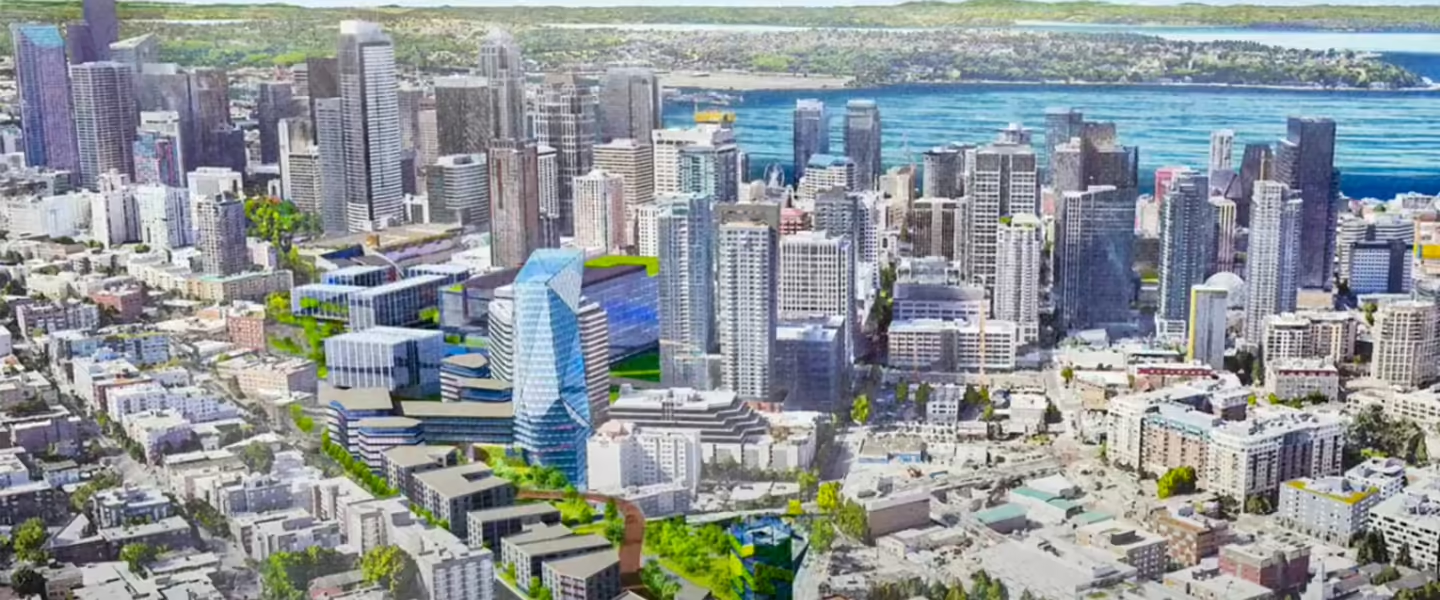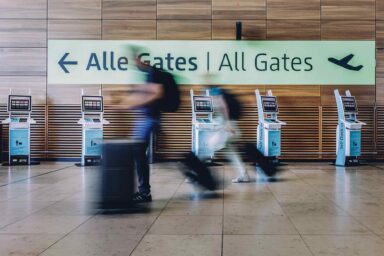While the public grows louder in their demands for sustainable transportation options, elected officials continue to support car-centric policies, placing the nation in gridlock.
|
Listen To This Story
|
Franklin Boulevard cuts through the University of Oregon like an asphalt scar. To get to their classes or dorms, many of the school’s 20,000 undergraduate students, who often walk or bike, must face off with cars barreling down the boulevard’s six lanes, often traveling above the 35-miles-per-hour speed limit .
In some cases, crossing the street is deadly.
The city of Eugene, where the university is located, has recorded 94 crashes on Franklin Boulevard from 2017-2021, with seven of these resulting in life-altering injuries or death.
At the time of writing, there are only a few ways to cross the boulevard. Students going to a scientific laboratory can use a sky bridge that connects two university buildings, but the majority of pedestrians and most bike-riders use crosswalks that many say are unsafe because of how wide and busy the boulevard is.
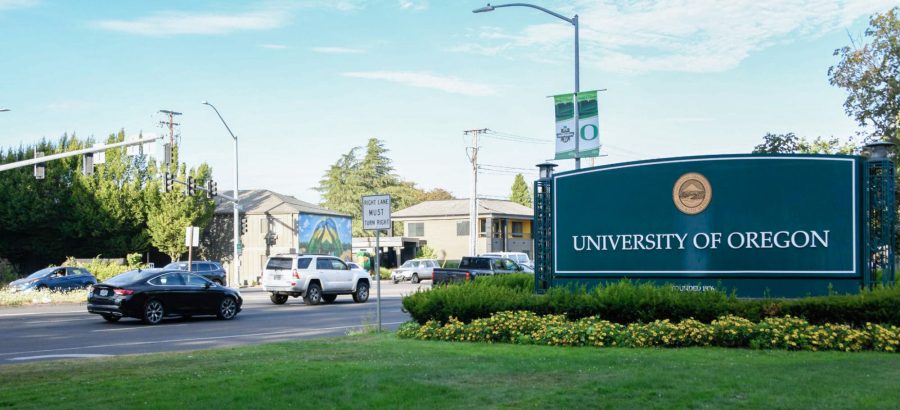
As the university continues to expand around the boulevard, Eugene has decided to transform the street into one that is safe and pedestrian-friendly… at least for the most part.
However, many residents believe the proposed changes don’t adequately address their safety concerns.
Rob Zako, the executive director of Better Eugene-Springfield Transportation (BEST), a nonprofit organization that promotes safer streets and increased public transportation, sees the project as a case of good intentions, but bad execution. Adding multiple five-lane roundabouts, the main focus of the city’s plan, without lowering the speed limit will only allow drivers to continue at dangerous speeds, and won’t make crossing the street any safer, he said.
The city of Eugene, in their official Franklin Corridor Report, acknowledges that the five-lane roundabouts merely “encourage” slower speeds, but may also make it more complicated for pedestrians to navigate crosswalks.
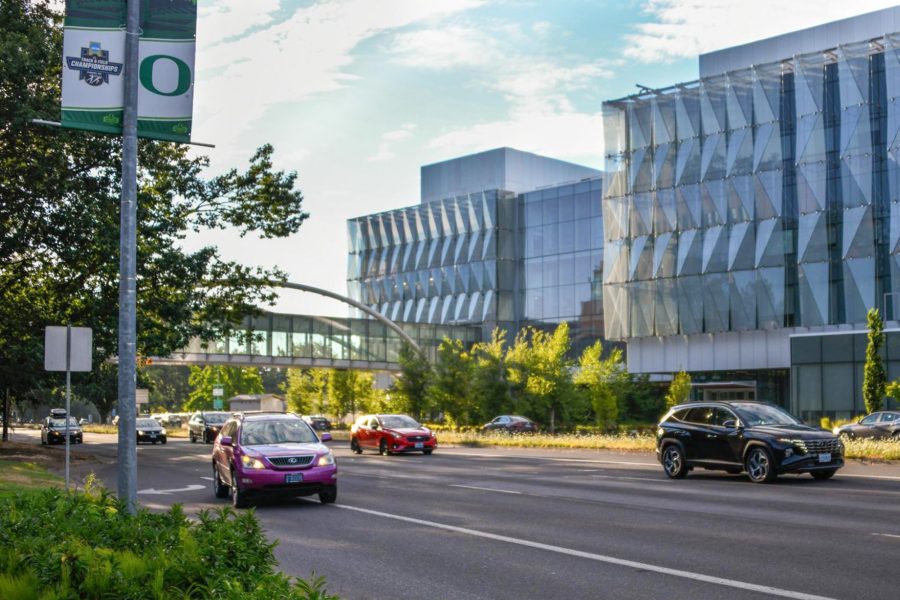
“We need to make sure that everyone has at least their top priority,” said Zako. “And for people walking and biking on Franklin, that’s that they don’t die.”
In a 2023 online survey fielded by BEST, a majority of the 634 respondents agreed with BEST’s position — the proposed changes to Franklin Boulevard are not enough.
But the real task lies in convincing the city to change its car-centric designs.
“You have to choose,” Zako said when talking about what steps Eugene city leaders should take next. “Do you want cars to move conveniently and smoothly? Is that your top priority? Or do you want people and kids to be able to cross the street and not die? It’s somebody’s convenience versus somebody’s life.”
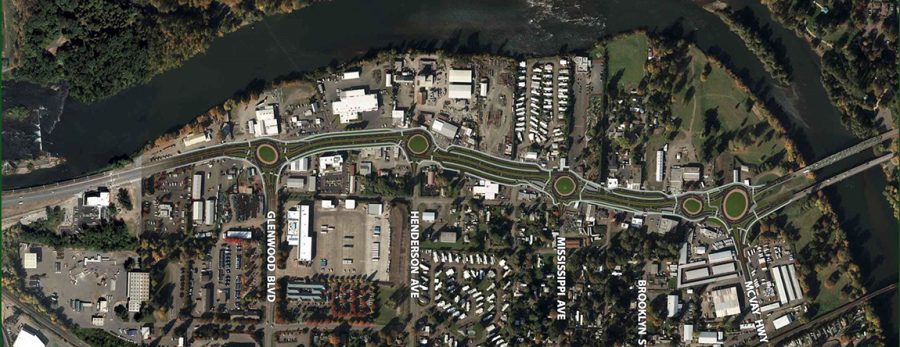
These are questions that officials across the country have to ask themselves. And, in many cases, the answer is to prioritize cars over people
According to a study by the United States Public Interest Research Group, 17 of the top 20 largest projects receiving funding from the Bipartisan Infrastructure Law — which President Joe Biden signed in 2021 and that was hailed as an opportunity to upgrade failing bridges, roads, and public transportation — include highway expansions.
To combat this issue, countless organizations like BEST have formed at local, state, and national levels, urging legislators to halt new construction plans and instead invest in projects that effectively benefit the safety and sustainability of communities. A 2023 study by Transportation for America found that 70 percent of respondents agree that providing people with more transportation options is better than building more highways.
But policymakers at all levels still overwhelmingly favor the latter.
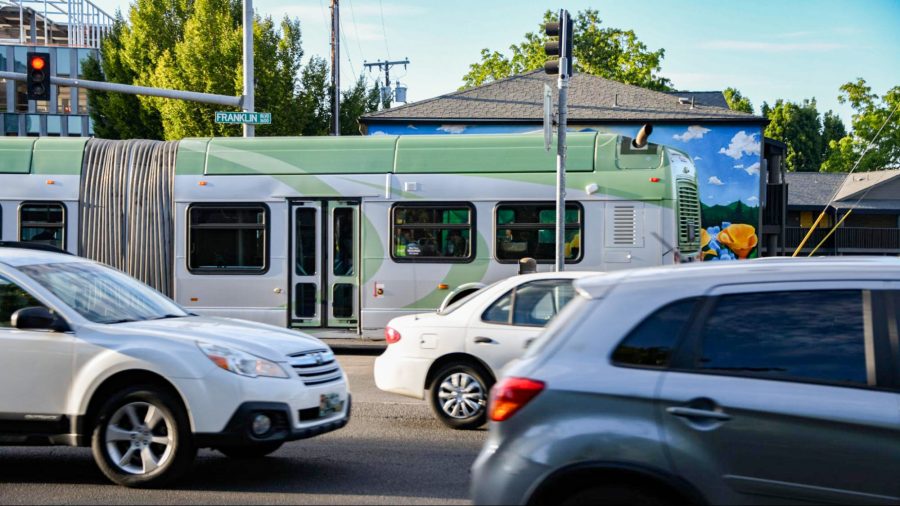
One of the advocates who wants to make a difference is Scott Bonjukian, who is co-chair of the steering committee for the advocacy group Lid I-5. His organization has been advocating for the construction of a lid — holding parks, housing, and community spaces — on top of the portion of Interstate 5 that runs through downtown Seattle.
The group believes that this project could reduce pollution, reconnect neighborhoods, and improve the ease of walking and biking through the city.
Bonjukian believes that progress is being made… although at a measured pace.
“Especially in the more progressive states, things are perhaps moving slowly in the right direction,” said Bonjukian when discussing government support for sustainable transportation options. “But even those lawmakers are still enthralled with the car.”
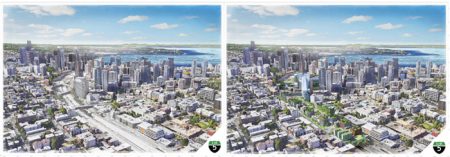
With no “crisis” point to push their project forward, like dire safety issues that warrant immediate attention, the volunteer-run organization is struggling to convince city council members to greenlight the $1.5 billion project — in comparison, the Washington State DOT will spend an estimated $5.4 billion dollars on multiple highway projects across the state.
“Our case is harder to make because the status quo is, ‘Everything’s operating smoothly, so why change it?’” said Bonjukian. “And now we’re coming in at a seemingly random point, trying to make the interstate better. It would almost be helpful if we had an earthquake that would force repairs to the freeway, and then we could talk about adding the lid at the same time.”
Another roadblock advocacy organizations face is the power large business coalitions, like the Transportation Construction Coalition, hold to sway decisions and push pro-highway policies forward, even if the public is against them.
To Mike McGinn, former mayor of Seattle, this continued defense of car-centric spending patterns stems directly from these business coalitions, who have more political power with legislators than individual citizens or nonprofit organizations.
“People hear elected officials out there saying, ‘We care about climate, we care about safety, and health.’ But when you look at the big dollar flows, they’re not aligned,” said McGinn, who now serves as executive director of the nonprofit organization America Walks. “And it’s this disconnect that is the biggest challenge to change.”
During his time as mayor from 2010-2013, McGinn found that even in a liberal city like Seattle, the governor and city council members supported highway construction projects, despite the fact that more public benefits would come from using the money to build better sidewalks, improve bus circulation, and expand the city’s Link light rail system.
Other progressive enclaves like New York City are also having issues in shifting spending from cars to public transit.
In early June, New York State Gov. Kathy Hochul (D) abruptly canceled what would have been America’s first congestion pricing plan, which would have placed a toll on vehicles entering the city after June 30th and provided the Metropolitan Transit Authority with $15 billion to repair and expand the area’s deteriorating public transit infrastructure.
Hochul, one of the loudest officials to support the plan in previous years, stated that the maximum $15 toll, paid every time a passenger vehicle traveled into Manhattan at 60th St. or below, would have harmed middle-class families and deterred people from coming into the city to work.
Many supporters of the congestion pricing plan suspect that her decision was most likely caused by pressure from opposing suburban constituents as well as lawsuits like the one filed by New Jersey Gov. Phil Murphy (D), which stated that the plan was unconstitutional.
But advocacy organizations are continuing to fight Hochul’s suspension of the project.
A coalition of supporters of the congestion pricing plan, composed of environmental groups and pro-transit organizations, have already filed two lawsuits against the decision. The first case argues that Hochul does not have the legal authority to “direct” the MTA to suspend the plan, while the second contends that the decision counteracts the state’s efforts to reduce greenhouse gas emissions.
“One of the things we and other advocates in our coalition have agreed upon is to keep the story alive,” said Tiffany-Ann Taylor, the vice president of transportation at NYC-based nonprofit Regional Plan Association, when talking about the best ways to respond. “It is one thing to express outrage and another thing to continue to keep the story active.”
While the majority of transit advocates are disappointed in the decision, many see the backlash Hochul faced after halting the congestion plan as a positive sign that public opinion is still moving in their direction.
“We see our side of the argument gaining strength,” said McGinn when discussing the suspension. “But we still are far from changing that juggernaut of spending that goes in the wrong direction.”
Although the Bipartisan Infrastructure Law has helped boost public transit, many activists still feel that the legislation contains more car-centric spending than it should.
Of the funds disbursed to states this year from the law, more than half (around $70 billion) has gone to the resurfacing or expanding of roads and highways. Just a fifth of this money has gone to public transit.
And while the new law also gave around $3 billion of grant money this year to tear down or cap highways that divide and cause fundamental damage to certain communities, this is only a tiny fraction of the billions of dollars funneling into highway expansion projects across the country.
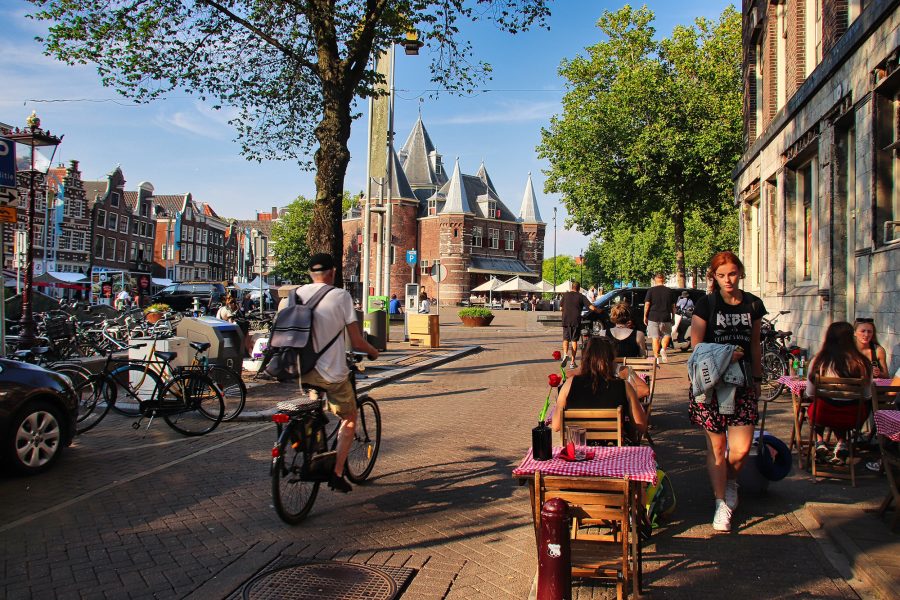
Despite the gloomy outlooks some advocates have about the present situation, they still hold hope that cities can move away from car-centric policies — because it has been done before.
Jenny Roe, co-author of the book Infrastructure, Wellbeing and the Measurement of Happiness and professor at the University of Virginia, points to Amsterdam’s transformation as proof that creating a safe road infrastructure is possible.
Before the late 1970s, streets in Amsterdam — now infamous for its biking culture — looked similar to the crowded, urban streets in the US today. But bicycle protests, led by neighborhood groups, environmentalists, and the cyclist union, helped push the Dutch government to pass pro-cycling policies and to implement safer urban planning designs.
“We can be pioneers, like the case of Amsterdam,” said Roe. “It’s all about convincing people that there’s a different and better way to do things.”
More recently, Paris has also begun to transition from cars to bikes.
In an effort to transform the City of Lights to be fully bikeable, Paris has added more than 52.2 miles of bike lanes since 2020, and has seen a 71 percent increase in bike usage between the end of COVID-19 lockdowns and 2023, according to Paris City Hall.
Parisians also voted in a referendum earlier this year to triple parking fees to €18 (~$20) an hour for large SUVs in the city center in an effort to discourage bulky, gas-guzzling vehicles from crowding streets and polluting the air.
Even if advocacy organizations and the public can unite with government officials to create new, sweeping policies that favor walking, biking, and public transit, it will still take decades to put them in place.
“There’s not one piece of legislation that is going to turn the spigot off,” said McGinn. “It’s going to take multiple attempts and ultimately the political will to say, ‘No, we have better things to do with this money for the health of our people, for the health of the air, than expanding highways.’”
